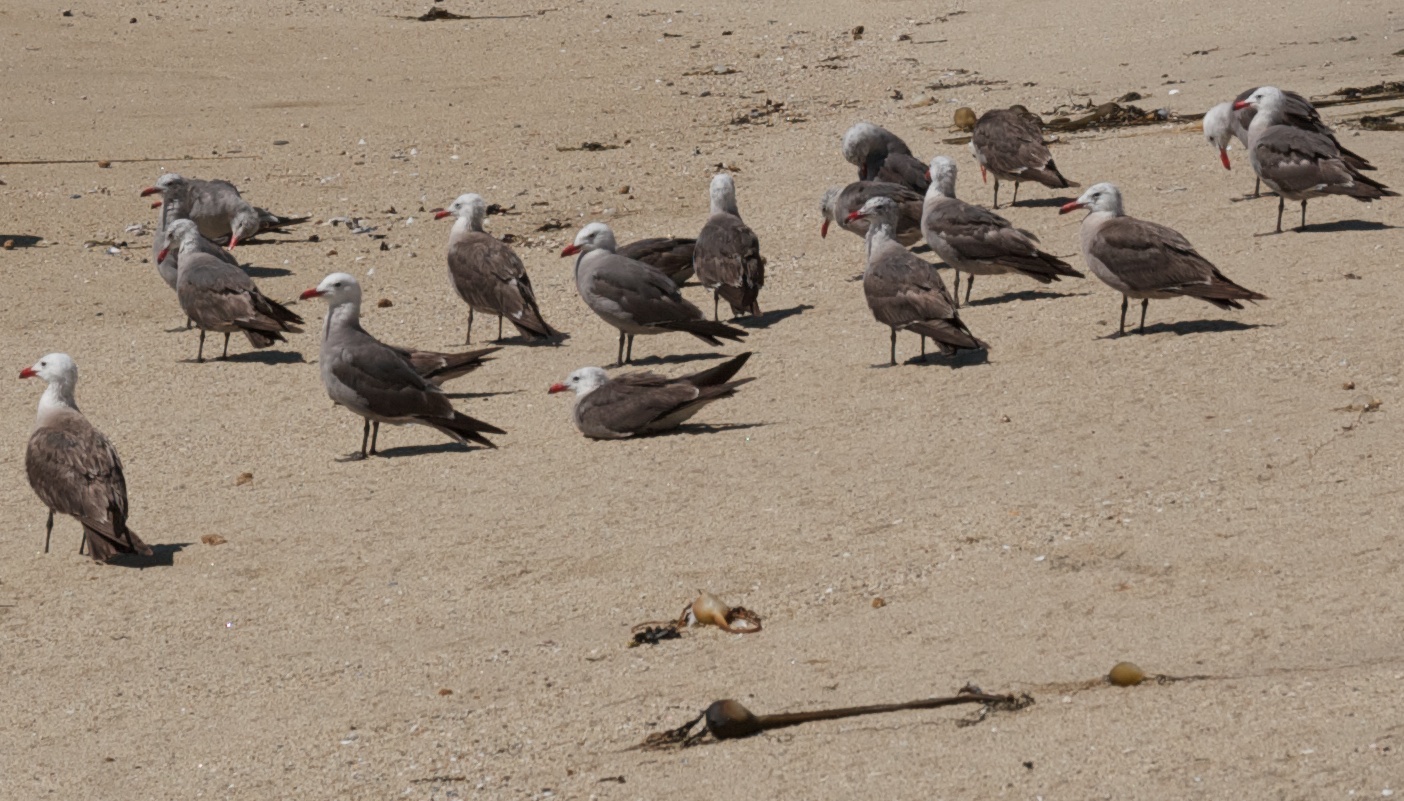Published in the Ocean Watch column, Honolulu Star-Advertiser © Susan Scott
June 11, 2012

Heerman’s gull.
I arrived in Mexico last week to sail my 37-foot ketch Honu one last time before the hurricane season. Then I will put the boat in a marina, go home and hope for the best.
Another good reason to give the boat a rest is Mexico’s summer heat.
“No, don’t come back in September,” a marina worker told me. “You’ll die!”
Seems like a good reason to wait until late fall.
The temperatures here in Puerto Vallarta are near 90 degrees right now, with nights about 80. It’s a steamy heat that feels like Kona weather, complete with a voglike haze hanging over the mountains. (Not vog, but moisture.) Also, the nutrient-rich water is olive-colored, exposing my Hawaii bias. I feel far less inclined to plunge into a pea-green sea than into a clear blue lagoon.
Still, there are joys in this part of the tropics like no others, and one, the Heermann’s gulls, pictured, are here in all their splendor. These seabirds brighten nearly every beach walk, especially this time of year when the birds are decked out in brilliant breeding colors. I agree with the National Audubon Society, which says on its website that Heermann’s gulls are one of North America’s most beautiful gulls.
The birds, 18 to 20 inches long, are currently wearing gaudy red lipstick, white headdresses and dark gray cloaks. To me the birds look like pirates dressed up for church, because I know what these little rascals are up to. Let your guard down for a second and a Heermann’s will steal you blind.
If you’re a pelican, that is. The gulls watch pelicans flying over the ocean in search of fish, and when a pelican tucks and dives, a Heermann’s makes a beeline for the entry point. When the pelican surfaces with its catch, trouble is waiting.
Before the pelican can swallow its pouch of fish, it must arrange them with their heads pointing back, toward the throat. This is hard enough with a bunch of panicked anchovies desperately trying to squeeze through the crack between the bird’s bills. But there’s pressure from outside, too. Right there, pecking away, is a Heermann’s gull hoping for a free meal.
During my cockpit-lounging time in the Sea of Cortez (Gulf of California), I can spend hours watching pelicans cannonball into the ocean and then pirouette around and around in their efforts to turn their backs to the thieving gulls.
And the poor fish don’t have a prayer. When one does manage to get its head out of the pelican’s mouth, a gull is right there to snatch it.
Nearly all Heermann’s gulls in the world breed on one tiny islet, Isla Raza, in the Sea of Cortez. The Mexican government has restricted human access to Raza to researchers only, thus saving the gulls from egg collectors and near extinction.
The pelicans might not be thrilled about having these lively gulls at their dinner table, but seeing the Heermann’s dressed to the nines and swiping fish makes my day. They almost make me forget the heat.

Heerman’s gulls in Northern California at Point Reyes. Courtesy Scott R. Davis
©2012 Susan Scott